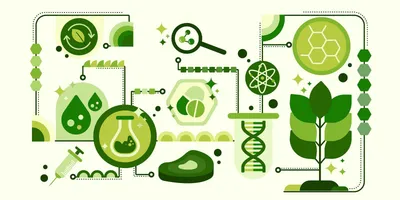Laboratories are often portrayed as sustainability’s toughest challenge—energy-hungry spaces packed with equipment that must run around the clock. Yet, behind that complexity lies an overlooked advantage: lab managers hold the power to change what happens day-to-day.
From purchasing decisions to how waste streams are handled, many of the most effective environmental improvements start at the bench, not in the boardroom. The question is how to turn those small, local choices into measurable progress.
During the Green Labs Digital Summit, Andrew King, senior director strategy and PMO lead for operations Sweden & EMEA supply at AstraZeneca, explained that “most sustainable benefits come from how we work—processes, sourcing, and energy moderation—not necessarily from capital investment.” His message resonated with attendees because it reframed sustainability as a management practice rather than an engineering problem. Behavior, he said, is the most powerful lever a lab can pull.
Empowering lab managers to drive sustainability
That philosophy has become central to green lab programs across academia as well. At the University of Alabama at Birmingham (UAB), sustainability lead Emily Colpack encourages researchers to focus on what’s within reach. “Start with what you can control,” she said. “Do the easy things first—turn off idle instruments, schedule equipment timers, and adjust freezer set points.”
Lowering a –80°C freezer to –70°C can cut its energy use by as much as 30 percent. It’s a small adjustment, but it sets a tone: sustainability isn’t about perfection—it’s about participation. “Once people see that their effort matters,” Colpack added, “they start looking for the next opportunity.”
Research assistant professor Emma Stapleton Thornell at the University of Iowa saw similar momentum when she formed a grassroots sustainability group. “Forming a group was critical—everyone brings different perspectives, and that keeps it going,” she said. The team began with simple data gathering: energy audits, waste tallies, and freezer counts. “When we showed leadership that one floor spent $25,000 a year on biohazard waste, the conversation changed,” Thornell said. Numbers, she learned, build credibility.
Green lab procurement and waste reduction strategies
Once that credibility is established, lab managers can influence systems far beyond their own benches. Thornell’s team, for example, persuaded the university’s biochemistry store to stop carrying racked conical tubes that arrived in bulky Styrofoam. When labs switched to the non-racked version, the store revised its catalog entirely. Later, they introduced cardboard pipette-tip boxes—recyclable, cheaper, and now standard across departments.
Those changes may sound minor, but multiplied across thousands of orders, they demonstrate how procurement becomes policy. Every purchasing decision is a vote for how the scientific supply chain operates.
Whether in global R&D facilities or academic departments, the pattern is the same: engagement grows when people see their work making a measurable difference.
King has witnessed that effect at scale. AstraZeneca’s “Switch Off” initiative invited scientists to compete in reducing energy and waste across 116 sites worldwide. “We empowered all of our labs to identify the opportunities that mattered most to them,” he said. “Then we turned those into challenges and let them compete on impact.” The results were tangible: more than 5,000 kilowatt-hours saved per day, simply by powering down idle equipment.
Recognition played a crucial role. Through My Green Lab certification, the company turned individual lab results into a collective benchmark. “Certification gave us structure,” King said, “but competition gave us energy.”
Advanced Lab Management Certificate
The Advanced Lab Management certificate is more than training—it’s a professional advantage.
Gain critical skills and IACET-approved CEUs that make a measurable difference.
Building a sustainable laboratory culture
Colpack has seen the same dynamic on a smaller scale. At UAB, sticker-based recognition marks each lab’s certification level. “People walk by, see another lab labeled platinum, and ask, ‘What do we need to do to get that?’” she said. “Competition works better than mandates.”
But she also cautions that success depends on collaboration. “Our facilities team discovered one building never switched to unoccupied mode at night,” she said. “Fixing that saved about $20,000 in one month.” In other words, sustainability isn’t an isolated effort. It thrives on cross-department partnerships that connect labs with facilities, EH&S, and procurement.
For Thornell, those partnerships reinforce accountability. “Everyone’s data-oriented,” she said. “Once they see savings in numbers, they take it seriously.” Her group tracks waste reductions and energy savings in spreadsheets visible to every department, turning data into shared motivation.
Energy efficiency and waste prevention in the lab
King believes the next evolution of lab sustainability will focus on preventing waste before it enters the lab. “We’re moving from eliminating waste leaving the lab to eliminating waste coming in,” he said. That mindset shift—questioning each purchase, each protocol, each habit—creates resilience and long-term value.
Thornell sees it as cultural work as much as operational. “You have to debunk myths, repeat the message, and keep showing up,” she said. “People can change, but it takes persistence.”
And Colpack agrees: “Once researchers understand the ‘why,’ they own the change.”
The lasting impact of sustainable laboratory practices
Sustainability in science doesn’t always come from bold infrastructure projects or million-dollar retrofits. It often begins with a manager who notices a light left on, a freezer running too cold, or a shipment wrapped in unnecessary plastic—and decides to do something about it.
For those on the front lines of research, that’s an encouraging message. You don’t need to control the building to change the culture. You just need to start where you stand.














